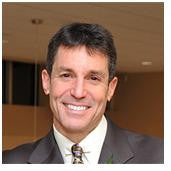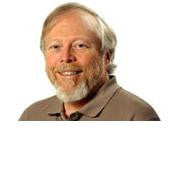What I learned at this year's NATIONAL WELLNESS CONFERENCE: Wellness vs. wellbeing, ranking your food on a scale from 1-100 and Laser Coaching
The National Wellness Conference was held this year in Minneapolis, MN for the first time ever. It's been held in Steven's Point, Wisconsin now for over thirty years. Having spent a wonderful week in Minneapolis, learning about wellness, riding the Minneapolis light rail system, checking out trendy restaurants and walking across the beautiful Mississippi river too many times to even count (the campus is located on BOTH sides) I highly doubt the conference will ever go back to Steven's Point which is just too small a city to properly support this conference (in my opinion).

Crossing the University of Minnesota footbridge over the Mississippi (looking at downtown Minneapolis) at night.
The difference between wellness and wellbeing
Dr. Mary Jo Kreitzer gave the opening keynote address and she talked about the difference between wellness and wellbeing. She made the point that wellness is sometimes defined as the absence of illness (which when you think about it, isn't really saying much) where as wellbeing, is about thriving and flourishing. She even made a case for why someone living with cancer or some other major illness, by her definition, could still experience wellbeing. She defines it as a state where we feel content; connected to a purpose; connected to people and community; And where we feel peaceful and energized.
 Dr. David Katz gave the closing keynote address. Dr. Katz and I made a series of videos together on stress and I knew from working with him (and hearing him speak at other conferences) that his keynote was likely to be very good. He did not disappoint. He has a new book out, entitled: Disease Proof which formed the basis for his presentation: He talked about choosing a healthy diet, helping kids get enough exercise in school and a brand new nutritional labeling system called NuVal.
Dr. David Katz gave the closing keynote address. Dr. Katz and I made a series of videos together on stress and I knew from working with him (and hearing him speak at other conferences) that his keynote was likely to be very good. He did not disappoint. He has a new book out, entitled: Disease Proof which formed the basis for his presentation: He talked about choosing a healthy diet, helping kids get enough exercise in school and a brand new nutritional labeling system called NuVal.
During his presentation he quoted a huge German study - with over 23,000 participants - that looked at the life-altering properties of four (controllable) lifestyle factors that have a powerful effect on health and longevity. You can probably guess what those four lifestyle factors are: Smoking, body weight, physical activity and diet. According to the study Dr. Katz said, "flipping the switch from bad to good on any one of these lifestyle factors was associated with a 50% reduced probability of chronic disease. There simply is - or never will be - a drug to rival that. And to use lifestyle as medicine, no prescription is required!"
Ranking your food on a scale from 1-100
Dr. Katz likes to make healthy living easy for anyone to understand. If you haven't heard of his Nu-Val system you should really check it out and find a grocery store chain in your area that uses it. He put together a top notch team of experts from Yale and Harvard to rate the nutritional content for every single product in a typical grocery store, based on a scale from 1-100. As a shopper who wants to eat healthier, he explained, you are always looking to score as many points per food item as possible, so you can pick from a wide range of foods (from bacon to blueberries) and still have a relatively healthy diet. Just increase your numbers where ever you can, i.e., look for a loaf of bread with a higher number than the bread you are using now and bingo, you've improved your diet. It's an absolutely brilliant system.
Speed coaching
 I must say, if there was any one thing that differentiates this conference from other wellness conferences, it is the emphasis on coaching. It draws a lot of people who are either in that business or want to be. One of the breakout sessions I attended was on Laser Coaching. This is an abbreviated form of coaching advocated by Real Balance Global Wellness and this breakout session was put on primarily by Dr. Linda Gogl with the assistance of Dr. Michael Arloski. The presenters make the claim that a health coach can accomplish almost as much in 10-15 minutes using this "laser coaching" method as he or she might accomplish in a much longer coaching session, using another standard method.
I must say, if there was any one thing that differentiates this conference from other wellness conferences, it is the emphasis on coaching. It draws a lot of people who are either in that business or want to be. One of the breakout sessions I attended was on Laser Coaching. This is an abbreviated form of coaching advocated by Real Balance Global Wellness and this breakout session was put on primarily by Dr. Linda Gogl with the assistance of Dr. Michael Arloski. The presenters make the claim that a health coach can accomplish almost as much in 10-15 minutes using this "laser coaching" method as he or she might accomplish in a much longer coaching session, using another standard method.
Here's how it works: (These abbreviated sessions can be as little as ten minutes or as long as 20 or even 30 minutes.)
Session opening; create a connection with the client. Devote approximately 8% of the session to achieving this goal. (Or, as little as 1 minute of time in shortest form of this technique.)
Weekly progress review about what worked well what did not. Devote 30% of the session to this. (2-3 minutes, minimum)
Being present with the client, exploring and processing what they are going through etc. Devote 40% of the session to this. (3-4 minutes, minimum)
Detailing next steps with the client including agreements along with accountability & support. Devote 20% of the session to this. (2-3 minutes, minimum)
Leave the client with a homework assignment. Devote 4% of the session to this. (1 minute, minimum.)
Close the session with summarization, acknowledgement, support, feedback on the session - and what worked well. Devote 8% of the session to this. (1 minute, minimum)
When Linda Gogl described how quickly this coaching method could work, I must admit I was dubious. But that's when, coaching guru and one of the keynote speakers at the conference, Dr. Michael Arloski, stood up, asked for a random volunteer from the audience and demonstrated the technique right on the spot.
Michael worked through each one of above steps in his own unique way and never seemed like he was rushing the "client" AT ALL. He clearly made a genuine connection with the person he was advising, and using some obvious motivational interviewing techniques, guided her effortlessly through each of the above steps, and did it all in less than ten minutes. Everybody in the room was amazed at how well it went and how laser-focused it was. In fact, I'd venture to say that the tight time schedule made the coaching session even more effective, because there were no distractions from the goal of making progress in the one area where the client was seeking help: to try to get more exercise into her life.

Right at one end of the footbridge in the photo above is this modern art museum designed by world famous architect, Frank Geary. That's me with my conference badge on.
I really liked Minneapolis. There is lots to do, lots to see and overall, it's a fun place to spend a week at the end of June. I even liked staying on the campus this year. I shared a bathroom with one other person who I NEVER saw. And the room was comfortable and air-conditioned. I understand the conference will be in Minneapolis again next year. In my next article I'll tell you a little bit about my presentation entitled THE FUTURE OF STRESS MANAGEMENT.







James Porter
Author